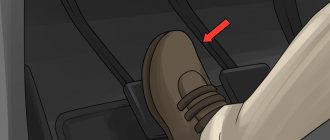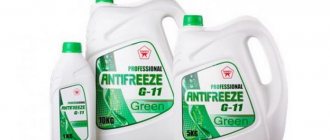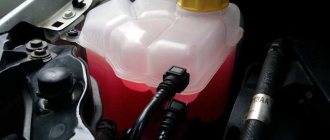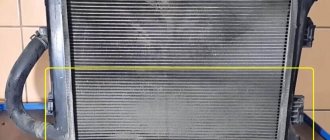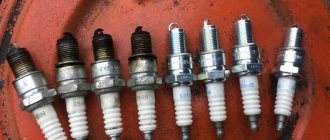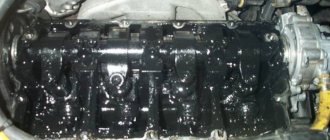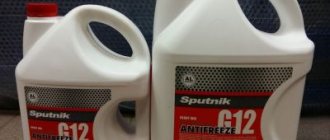Main function of antifreeze
– engine cooling. Untimely replacement can lead to serious consequences, in particular, engine overheating. The correct choice of high-quality antifreeze will help you avoid this.
What is antifreeze?
Antifreeze is the universal name for coolants for internal combustion engines. It is a mixture of water with one of the elements: ethylene glycol, propylene glycol, glycerin, alcohol.
What functions does antifreeze perform in a car?
—
Cooling the engine and maintaining its optimal temperature;
—
Protection of the cooling system from freezing, corrosion, scale and cavitation (water hammer, which causes destruction of the metal);
—
Is a lubricant for the pump.
Why do you need to change antifreeze?
The most important thing in the composition of antifreeze
- these are additives. Over time, their properties are lost, and ethylene glycol and water, of which antifreeze mainly consists, begin to become corrosive. Do you want a hole in the radiator? Ride on the old antifreeze for another six months.
Due to corrosion products (rust particles) in the coolant, the thermostat can become jammed, the pump impeller can collapse, the pump bearing can depressurize, the radiator and even engine channels can become clogged. All this can lead to engine overheating. At first, engine overheating leads to an increase in fuel consumption, then to a decrease in engine power. Constant overheating reduces its service life by 2-3 times.
These consequences can be avoided thanks to high-quality antifreeze and its timely replacement. Periodically look into the expansion tank and check the antifreeze. If you notice low fluid levels, clouding of color, or the appearance of deposits in the form of rust, you need to change the antifreeze.
Which coolant to choose? Choose quality!
1
.
We recommend choosing organic coolant because... it: -
resists cavitation more effectively;
—
not aggressive to aluminum, rubber and plastic parts;
—
does not form gel or sediment;
—
works at lower temperatures;
—
the most important thing is that organic coolant does not interfere with heat transfer.
2
. It's no secret that 40% of the cost of antifreeze is additives.
Accordingly, in cheap coolant
- cheap additives, which means that such important properties as pump lubrication, protection against corrosion, scale and cavitation, such a liquid will perform much worse than a high-quality one.
3.
When purchasing antifreeze, pay attention to the following:
- Color.
Choose the color of antifreeze that is in your car.
— Antifreeze service life
.
The service life of conventional antifreeze (Long life coolant type) is 2 years. The service life of long-life antifreeze (such as Power Coolant Super long life coolant) is 4 years. — Freezing point of antifreeze.
The optimal freezing temperature for antifreeze is (-40C) and (-50C).
If the antifreeze has a freezing point (-60C), then it must be diluted with water, because the composition is too concentrated and promotes corrosion and aggressive action on rubber parts (pumps). And replacing a pump is an expensive and time-consuming process. - Country of Origin
. In the field of automobile and engine manufacturing, the Japanese are recognized leaders; Japanese companies such as Tanikawa Yuka (manufacturer of TCL antifreeze) develop, produce and supply antifreeze both for the first conveyor filling at the Komatsu plant and for after-sales service of cars in Japan. Therefore, the quality of antifreeze is the same as in new Japanese cars.
Thanks to these simple rules and recommendations, you can choose a high-quality antifreeze that is ideal for your car, thereby avoiding unpleasant consequences when using low-quality antifreeze and engine overheating.
The cooling system is responsible for stable engine operation. Corrosion, scale, and small foreign particles can interfere with the normal functioning of the car. It is important to carry out preventive maintenance, replace and add coolant in a timely manner.
After how many kilometers should you change the antifreeze in your car?
Different brands of cars require filling with liquids on different bases. Let's consider how often you need to change the coolant in a car.
- Kia Rio: scheduled replacement occurs once every 120 thousand km, or 8 years.
- Hyundai recommends replacing the technical fluid of the Solaris model after 200 thousand km or 10 years of use.
- On the Lada Grant, replacement is carried out after 75 thousand kilometers or after five years of operation.
Next, how often to change VAZ antifreeze. On a car, the manufacturer recommends replacement every 2 years or 60,000 km.
- Renault Logan: the composition should change after 6 years (90 thousand km).
Shelf life
The period of use before and after opening the container will be completely different . Unfortunately, manufacturers do not indicate this feature on the packaging.
If the container is sealed and has not been opened, it can be stored for more than five years.
The liquid will not undergo any changes in properties during storage. No sediment will fall to the bottom of the container .
After opening the container, you can use a device such as an aerometer . It measures the ratio of antifreeze base to distillate.
Why change antifreeze in a car?
A liquid that is resistant to low temperatures is used to cool the engine. In the CIS countries, the name “antifreeze” has taken root, but it is a separate liquid in the car.
The composition of antifreeze is water with glycerin, alcohol, ethylene glycol or propylene glycol, and various additives. Exposure to high temperatures can change the chemical composition of the mixture. In this regard, it is important to remember after how long to replace the coolant. According to the international classification, there are three types of coolant: G11, G12, G13 (silicate, organic acids or propylene glycol).
Video “Replacing coolant on Renault Logan, Sandero, Lada Largus”
This video shows the process of replacing the coolant using the example of Renault Logan, Sandero and Lada Largus.
For the normal functioning of a vehicle, such a consumable component as coolant is almost decisive.
Some experts equate the refrigerant in importance with motor oil .
Dear readers! Our articles talk about typical ways to resolve legal issues. If you want to find out how to solve your particular problem, call the free consultation numbers:
Why does antifreeze change color?
The manufacturer has the right to paint the product in any color. There is a generally accepted, but not mandatory, coloring scale:
Let's look at why antifreeze changes color. During operation, additives are produced and a change in coolant color becomes an indicator. For some brands, the indicator is discoloration rather than a change in shade.
What to do when repairing the system?
If you have antifreeze leaks, check the tightness of the connections of the pipes. They should be soft and fit snugly on the holes. If the rubber is hard, antifreeze flows through its microcracks. A breakdown of the radiator is also possible. During any operations involving the replacement of SOD components, be it a thermostat, hoses or pipe, the liquid is first drained into a previously prepared clean container.
But what if after the repair the level in the tank drops? Is it possible to add water to antifreeze? If it’s summer and the system has lost no more than 50 percent of the fluid, then it’s okay. But when cold weather sets in, it is advisable to drain the mixture completely and use full-fledged antifreeze.
When to change coolant
For some coolants the service life is 3 years, for others 5, for others 10 years. There are a number of factors that change the numbers and the replacement will have to be accelerated. We'll tell you why to do this further.
You can check the condition of the coolant using test strips, which will change color when exposed to antifreeze. The scale will show whether it is possible to postpone the procedure.
The second method is visual. When the liquid has a red tint, becomes cloudy or transparent, it already contains corrosion products. Sediment and foam indicate that it needs to be checked at a service station. Unscheduled replacement occurs when components are repaired or premature loss of properties.
Recently, a new device has appeared: an automatic system replacement machine that only needs access to the radiator filler neck. Every motorist needs to know what to add in winter and how to change the coolant at home.
Flushing the engine cooling system
It is worth flushing the cooling system in several cases:
- switching to another type of antifreeze or another manufacturer;
- the engine was running on water;
- the service life of the coolant has been exceeded;
- sealant was added to the system to eliminate radiator leaks.
When washing, it is recommended to forget about the “old-fashioned” methods and use special compounds that contain detergent and cleaning additives. For example, there are soft 5-7 minute wash kits, the effectiveness of which is controversial, or a two-step cleaning kit. At the first stage, you need to drain the old liquid, fill in a bottle of cleaner for the primary wash, and add clean water to the minimum mark. The engine should run for about half an hour at a temperature of 90 degrees. At this point, this system is cleaned of scale and rust.


